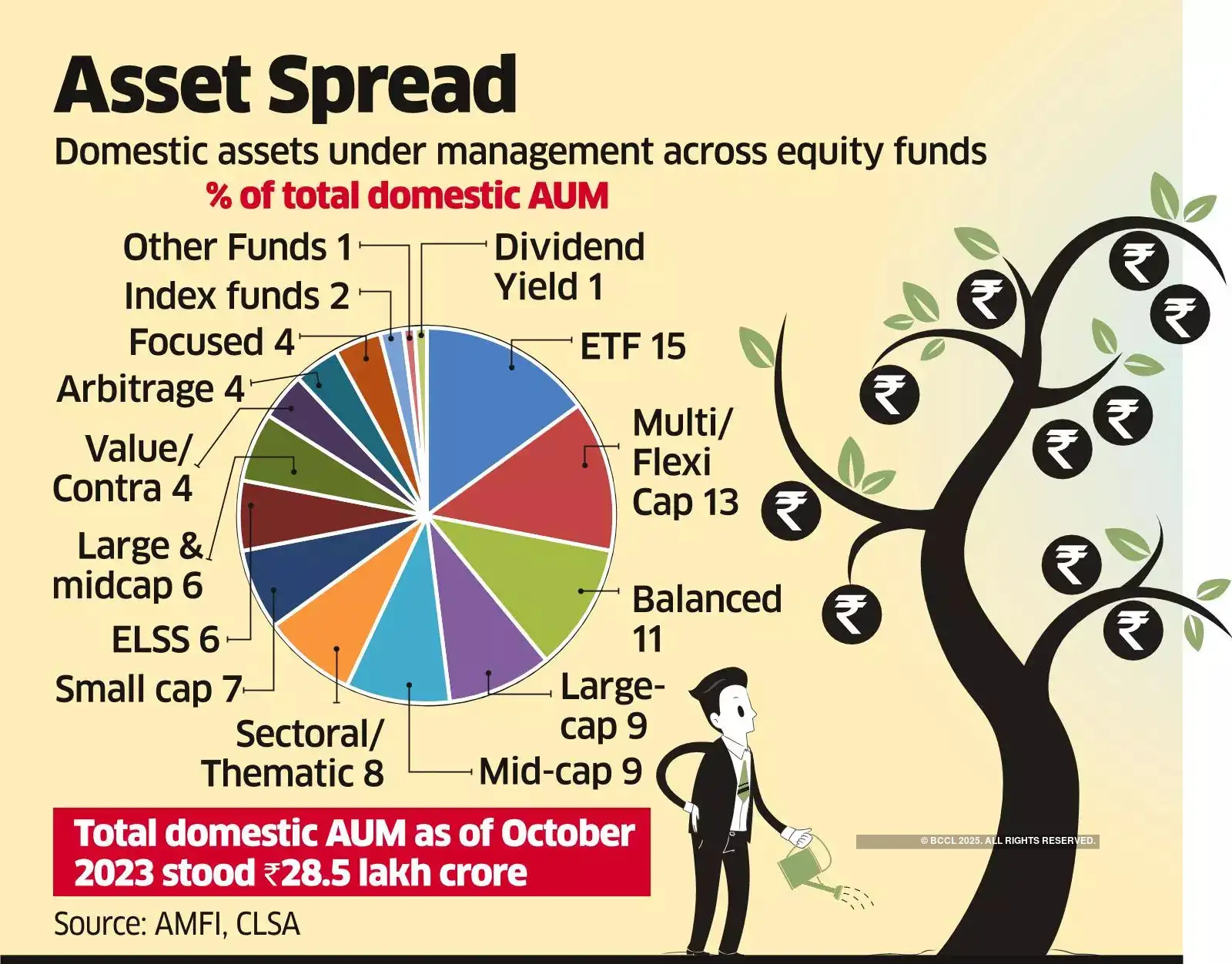The shift in investor preference towards multi cap funds owes to superior performance of mid cap and small cap companies, which have a higher exposure in these funds than flexi cap funds. Between January and October 2023, the Nifty Midcap 150 and the Nifty Smallcap 250 indices gained 23.3% and 28%, respectively, while the benchmark Nifty 50 gained 5.2%.
Over the past year, multi cap and flexi cap schemes on average have earned 22.3% and 16.3% returns, respectively. “A key reason why multi-cap funds have garnered higher inflows is their higher exposure to mid-and-small-cap companies. In the past three years, these companies have delivered high returns,” said Rupesh Bhansali, head-mutual funds at GEPL Capital. Over the past three years, the Nifty Midcap 150 and the Nifty Smallcap 250 indices have given 96.4% and 109% returns, respectively. The Nifty 50 index has given 41.3% returns over the same period.
According to the data from mutual funds research firm Value Research, the average holding of large caps (also includes blue-chips), mid caps and small caps in flexi cap schemes are 71.6%, 23% and 5.9%, respectively. For multi cap funds, it is 48.2%, 38% and 13.6% in that order.
Since January 2021 when AMFI started providing data for these categories, multi cap funds attracted a cumulative inflow of Rs 58,373.8 crore compared with Rs 48742.2 crore in the flex cap funds.
Barring 2022, multi cap funds have reported higher inflows in 2021 and 2023 so far. In 2022, a higher inflow in flexi cap schemes can be attributed to their higher exposure to large cap companies, which performed better than small cap and mid cap stocks. The S&P BSE 100 index delivered 3% return in 2022 while the S&P BSE Midcap index gained a paltry 0.2% and the S&P BSE Smallcap index lost 3% respectively.

“The trend reversed in 2023 as mid and small companies have delivered high returns as special or niche businesses which could be sector leaders in the coming years have found place in small cap indices. This helped boost returns of multi cap schemes which have higher exposure to mid caps and small caps,” said Bhansali.
According to Sebi guidelines, multi-cap funds need to invest minimum 25% each in the large cap, mid cap and small cap categories. Flexi cap funds on the other hand do not have such restrictions.
“Flexi cap managers find valuation comfort in large caps. While that helps during a bear phase, it may not yield high returns during market rallies,” said Harshavarshan Roongta, CFP, Roongta Securities adding that flexi cap managers do not want to underperform their peer schemes, which keeps them from increasing exposure to mid and small caps.







